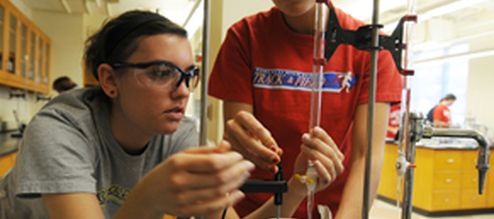Document Type
Article
Publication Date
5-2006
Publication Source
Journal of Molecular Structure: THEOCHEM
Abstract
The current article reports theoretical studies (DFT: B3LYP/6-31+G(d)) on the structure and alkylation reactions of the anions of some secondary N-nitrosocarbamates, a class of ambident nucleophiles whose chemistry has been little explored. Several anions (1–4), with an increasing size of the carbamate alkyl (aryl) group were investigated, in an attempt to establish the influence of the size of that group on the thermal stability and regioselectivity of alkylation of the title anions. The conclusion is that thermal stability and the mode of reaction are affected significantly only in the presence of very large and branched carbamate groups. The thermal decomposition studies at the B3LYP/6-31+G(d) level of theory yield quantitative results that are in very good or excellent agreement with experimental data. A detailed study of N- vs. O-alkylation reactions was conducted, in an attempt to reveal the nature and origin of regioselectivity. Several factors seem to play prominent role: (1) charge distribution within the N-nitrosocarbamate anion; (2) exothermicity of alkylation; (3) size of electrophile and (4) size of the carbamate alkyl (aryl) group. Computational results on the alkylation reactions of N-nitrosocarbamate anions are compared to results for alkylation of the acetone enolate ion, the outcome for the latter being in sharp contrast to earlier, lower-level calculations. In addition, alkylation studies were conducted on the Z-isomers of the title anions and the results indicate that they undergo O-alkylation with significantly lower barriers compared to the E-isomers. However, Z-isomers are 5–6 kcal/mol less stable thermodynamically and application of the Curtin–Hammett principle leads to the conclusion that O-alkylation occurs almost exclusively on the E-isomers.
Inclusive pages
21-31
ISBN/ISSN
0022-2860
Document Version
Postprint
Copyright
Copyright © 2006, Elsevier
Publisher
Elsevier
Volume
764
Peer Reviewed
yes
Issue
1-3
eCommons Citation
Benin, Vladimir, "Secondary N-nitrosocarbamate Anions: Structure and Alkylation Reactions. A DFT Study" (2006). Chemistry Faculty Publications. 3.
https://ecommons.udayton.edu/chm_fac_pub/3
Included in
Analytical Chemistry Commons, Biochemical Phenomena, Metabolism, and Nutrition Commons, Chemical and Pharmacologic Phenomena Commons, Environmental Chemistry Commons, Inorganic Chemistry Commons, Materials Chemistry Commons, Medical Biochemistry Commons, Medicinal-Pharmaceutical Chemistry Commons, Organic Chemistry Commons, Other Chemistry Commons, Physical Chemistry Commons




Comments
The document available for download is the authors' accepted manuscript, posted here in compliance with the publisher's policy on self-archiving.
Some differences may exist between this version and the publisher's version; as such, researchers wishing to quote directly from it are advised to consult the version of record, available at many libraries or from the publisher.
Permission documentation is on file.